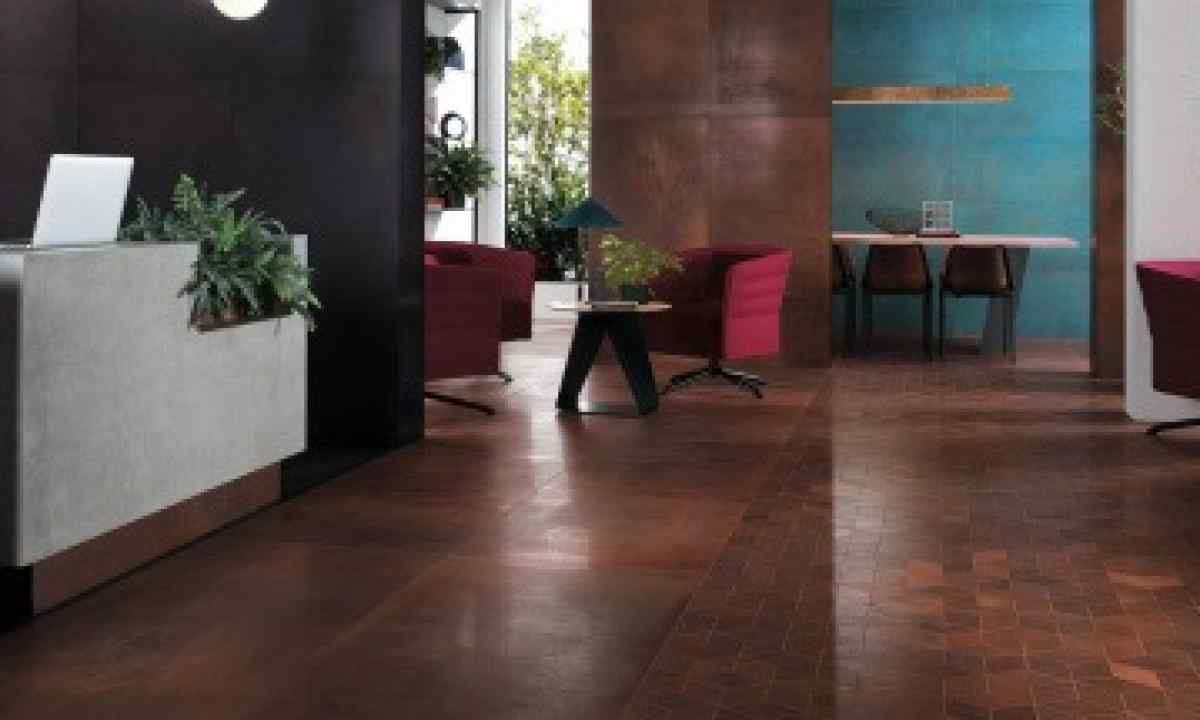The ceramic tile – would seem, the ideal, checked by time material for wall decoration and floors in bathrooms and kitchens. But for some reason recently it is fairly restricted by younger material – porcelain tile. In what the reason?
Porcelain tile is good all – is beautiful, but at the same time is not whimsical at all, very strong, wearproof, is not afraid of moisture, chemistry, mechanical loadings. High utilization properties of this material have also defined its extreme popularity. With stone it is made related by very dense structure. On resistance to abrasion and hardness porcelain tile costs in the same row with granite, quartz and even corundum. And here with ceramic tile this material is in the next relationship, one may say, that it is her "lineal descendant".
Porcelain tile was born thanks to the funny thing which has occurred at one Italian factory on production of ceramic tile. As a result of technology failure instead of normal tile, material, more similar to gray granite has turned out. And on density it was much closer to granite, than to ceramics. It was rejected, but soon producers have understood that such "ceramic stone" at debugged production technique can become excellent, cheaper alternative to natural stone.
So in the late eighties in Italy there was unique material which has received the name gres porcellanato that in translation means "stone porcelain". The name "porcelain tile", however, has gained a foothold in our country behind it some producers and sellers call this material the Italian word "gres".
Contrary to the occurring opinion, porcelain tile does not contain granite crumb (do not confuse with granite agglomerate). It is produced from the same materials, as qualitative ceramic tile - clays, kaolin, feldspar, quartz sand and mineral pigments. But the technology of its production considerably differs. Raw weight is pressed under pressure of 400-500 kg/cm and burned at temperature of 1200-1300 degrees. As a result raw materials sinter in monolithic "stone" layer.
Such material has practically no time that does it extremely dense, firm, impregnable for water and abrasives. Its water absorption is only 0.05% - below, than similar indicator of any natural stone. It means that porcelain tile can be used not only in damp internal rooms, but also on not heated balconies and terraces.
On structure porcelain tile is subdivided into glazed (smaltirovanny), partially painted and homogeneous (painted in weight).
Glazed porcelain tile externally practically differs in nothing from normal glazed ceramic tile. Difference only in basis material: utilization properties of porcelain tile are much higher, than at simple ceramics.
Partially painted porcelain tile has two-layer structure where the first layer – thick basis, and the second – more both thin and pigmented. Such combination is very economic thanks to smaller expense of expensive pigments.
Homogeneous porcelain tile (tutta massa) – the most widespread look. All weight at preparation stage is exposed to pigmentation, and the drawing remains invariable on all depth of material. Thanks to it, homogeneous porcelain tile becomes almost eternal material, even long-term use "on wear" cannot spoil working surface as abrasion of top layer does not lead to violation of the drawing.
The simplest and economic is the homogeneous porcelain tile with coloring "salt pepper" called so because of external similarity to this mix. To more expensive segment porcelain tile treats with coloring "monocolour". For coloring of tile of this type use expensive pigments which do not fade even under direct sunshine. It is reasonable to use this type of porcelain tile not only indoors, but also on the open balconies.
Porcelain tile – the most expensive as in its production use, as a rule, several pigments and process of their mixing is quite put at once with the drawing of natural stone. And it is possible to create imitation of the drawing of any "noble" stone – from marble to onyx and jasper.
There is also porcelain tile imitating ancient block or modular parquet. Such "parquet" much cheaper elite natural costs, and serves almost eternally.
For all types of ceramic granite, except glazed, there is classification by way of processing and surface texture.
Opaque porcelain tile is not exposed to any additional treatment after exit from the roaster furnace. Its surface has no gloss, but has very high hardness and high utilization properties. It allows to apply opaque porcelain tile in the most severe conditions.
Polished keramogranitotlichatsya by high luster, extraordinary beauty and "depth" of the drawing. This effect is reached thanks to cutting of front surface of opaque porcelain tile and very careful grinding. However at the same time the structure of micropores is broken and the wear resistance of material decreases. Such tiles generally use for wall decoration. If desired they can cover floors in the living room. For kitchen, to the bathroom and the hall the polished porcelain tile will hardly suit. At water ingress on polished surface it becomes very slippery, and sand and dirt which we often bring to the hall from the street will quickly spoil polish.
The semi-polished (lappatirovanny) porcelain tile is received for the account of partial polish of the top opaque layer. The beautiful invoice where the polished sites adjoin to sandpaper opaque surface is as a result created.
The structured porcelain tile. Its povernost differs in beautiful relief structure – it can be convex wavy lines, geometrical ornaments, fancy patterns from leaves and flowers, etc.

